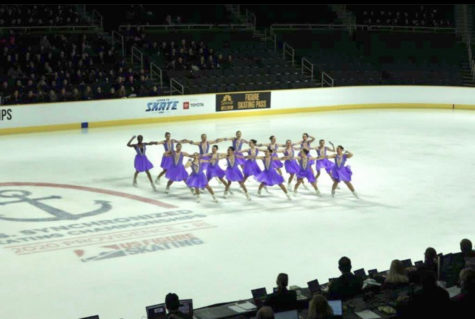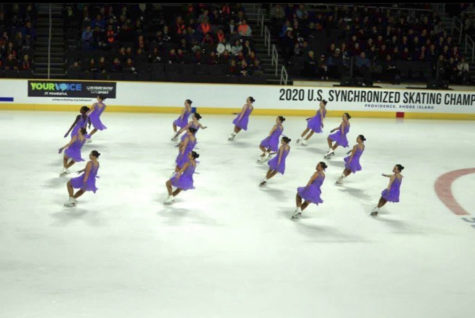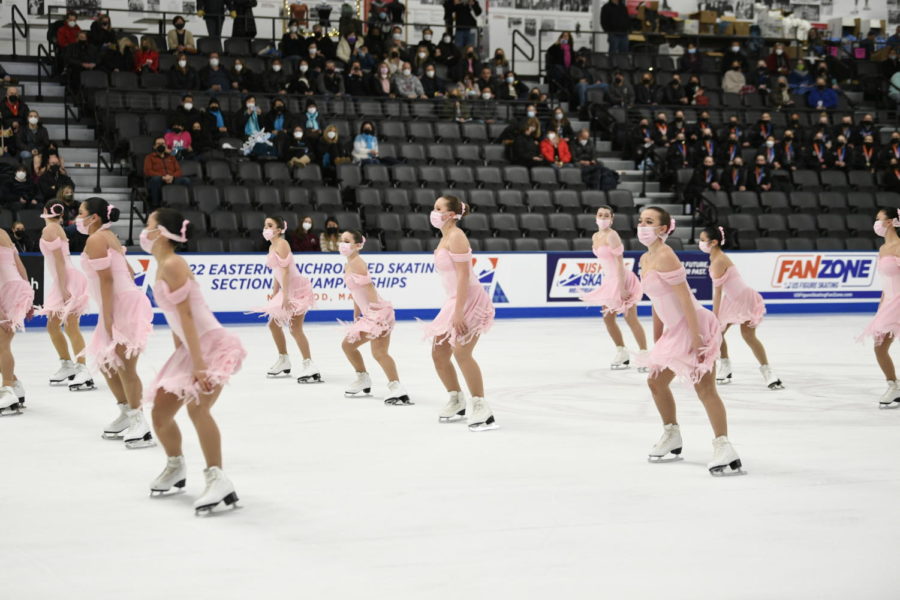The Hidden World of Synchronized Figure Skating
No, it is not like synchronized swimming on ice.
Used by permission of KRPhotogs Photography LLC
Here is Team Image Novice competing at the 2022 Eastern Synchronized Skating Championship, in the open block of their ‘Les Misérables’ themed program. Their gold-medal skate earned them a whopping 85.89 points
Have you ever heard of synchronized figure skating? I’m assuming the answer is no. Don’t worry, most people haven’t. There are three major figure skating disciplines; freestyle is the one you probably know best; think of Tonya Harding and Michelle Kwan. The others are pairs and ice dance. Of these three, synchro is most similar to ice dance. However, there is one major difference that sets it apart: sixteen skaters are on the ice at once, speeding across the slippery surface all in perfect synchrony.
Similar to other figure skating disciplines, competitive levels of synchronized skating are judged and scored using the International Judging System, or IJS. A figure skating program, referred to as a freeskate, is made up of elements, for example a pivoting block, an intersection, or a wheel, which have a base value of points based on their difficulty. Teams can get points added or subtracted (up to +5 and down to -5) from the base value depending on how well they perform the element, this is called Grade of Execution (GOE). Adding together the scores of each element makes up the technical score, which is then combined with the component score, which judges expression, choreography, and artistry, to create a team’s final score.
Although this niche sport flies under the mainstream radar, its culture and community is vibrant, passionate, and highly skilled. Synchronized figure skating was founded as “precision skating” by Dr. Richard Porter in 1956 in Ann Arbor, Michigan. Dr. Porter was a professor at the University of Michigan who pursued his personal passion for figure skating through judging and practicing on his own. After witnessing a group of skaters from the Ann Arbor Figure Skating Club choreographing a sequence of moves together, he immediately created the concept of group skating. From this idea Dr. Porter founded the Hockettes, the first synchronized skating team made up of twenty four skaters, to perform between the University of Michigan’s hockey games.
Over the past 65 years, Porter’s idea has grown to 615 registered synchronized skating teams in the United States and hundreds more around the world. “A group of 24 is essentially anonymous, and the sense of group participation, even by the real prima donnas, is marvelous,” Porter wrote for SKATING magazine in 2019, “It is good for public relations for the club and for figure skating, because many audiences, including hockey game crowds, often enjoy a big chorus even more than a star skater.” The first U.S. Synchronized Skating Championships were then held in 1984 and the first World Championships in 2000.

“Because synchro isn’t a known sport, it’s a very tight-knit community,” said Isabelle Smith, a first year student at Pace University and a member of Team Image Synchronized Skating Team’s novice line, “Everyone kind of grows up with each other so it’s very much family.” Isabelle joined Team Image eight years ago, when she was in 6th grade. The team was founded in Yonkers, New York, but has since grown and now pulls skaters from New York, New Jersey, Connecticut, and Delaware.
“Your skating friends are so different from your school friends,” explained Smith. “Every skater can recognize how terrible it is to wake up at 5:40 on a Sunday morning when all you want to do is sleep in, because all your other friends are. We all understand that it’s not easy to miss a practice, because we’re all so dedicated. School friends don’t understand that it’s something you just can’t miss.”
“What’s incredible about the community that synchro provides is you grow up with the same people around you. In skating, you watch your friends grow as people and develop as skaters. You watch each other cry, you see each other at their lowest and highest points. It’s given me the closest friendships of my life,” said Smith.
Early morning practices are the pinnacle of any figure skater’s experience. Waking up when it’s still dark to spend two hours exercising in a freezing cold ice rink would not be how many choose to spend their days, but for synchronized skaters it’s a must.
Competitions are another incredibly important aspect of synchronized figure skating. It is what skaters work towards and how they stay motivated during practices. Competitions for the 2020-2021 season were completely virtual, with teams sending in a recorded video of their program to a competition. Without the nerves and excitement of competitions to keep you on your toes, the season became boring and monotonous. “It felt like we were doing the same thing during every practice. I lost a lot of joy that I had for the sport, because I didn’t realize how important the competitions are to the experience. I’m so much happier now that competitions are in person again and we can travel,” said Emma Royce, a senior at New Rochelle High School who has been on Team Image for nine years.

Synchronized skating competitions usually require skaters to miss at least one day of school and consist of an official practice, where teams get the opportunity to run through their program on the ice where they will compete, down time to watch other teams compete, and then competing.
“The feeling of hitting our ending pose and knowing that it was a strong skate is one of the most incredible feelings ever,” said Smith. “The crowd is cheering, and you’re just so proud of yourself for what you’ve accomplished.”
“My favorite part of the competition experience is hearing our scores in the Kiss and Cry. Just a week ago we competed at the 25th Dr. Porter Synchro Classic where we received our highest score ever and won first place, which was just incredible,” said Royce. “The Kiss and Cry” is where skaters go to wait for their scores to be announced. Each skater clutches the waist of the one next to them, anticipating with hope and caution what number will be announced over the loudspeaker. When the outcome is good, the immense rush of joy is indescribable.
Notably, the International Skating Union (ISU) has been trying to make synchronized skating an Olympic sport since 2015. The ISU first applied for its entry in the 2018 Winter Olympics in Pyeongchang. The International Olympics Committee denied the sport’s entry into the games, claiming that more teams need to become competitive on the world level for it to be included. The sport applied again for the 2022 games and was denied. Now, the highest level synchronized skating teams, such as the Haydenettes, are fielding the new “Elite 12” division, essentially as a trial run for what synchro teams in the Olympics could look like.
Synchronized skating is not just an alternative option to skaters who don’t succeed in freestyle or ice dance; it is its own sport with a distinct culture and virtues. Whether it is providing experiences that every skater can relate to or emphasizing the power of competing with a team, synchronized skating deserves more recognition on the main stage of athletics. Not anyone can step on the ice with fifteen other people and perform a three and a half minute sprint of a routine filled with turns, tricks, and maneuvers, and make it look easy.
If you would like to learn more about synchronized figure skating, check out these short films!
Click HERE for the first film.
Click HERE for the second film.
And click HERE for the third film.
“What’s incredible about the community that synchro provides is you grow up with the same people around you. In skating, you watch your friends grow as people and develop as skaters. You watch each other cry, you see each other at their lowest and highest points. It’s given me the closest friendships of my life,” said Isabelle Smith, a first year student at Pace University and a member of Team Image Synchronized Skating Team’s novice line.
Helen Stone is the Editor in Chief and Facebook Editor for 'The Science Survey.' She is interested in journalistic writing because she believes that a...

